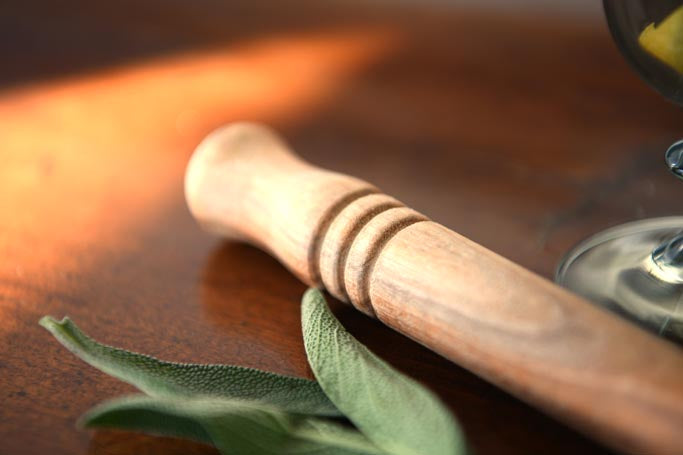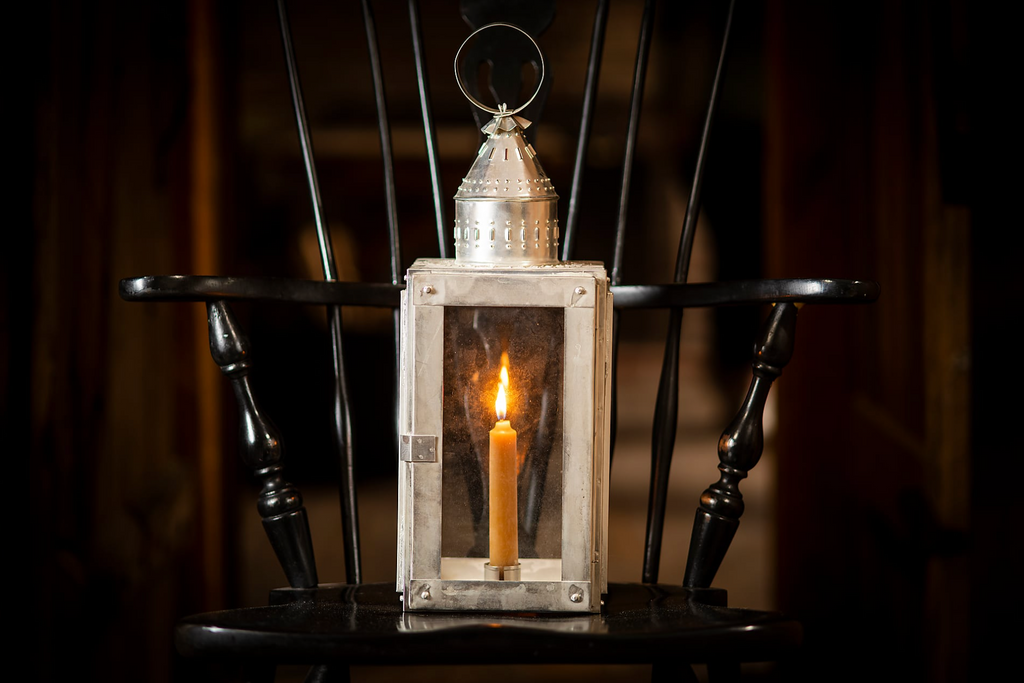You are viewing prices for the United Kingdom 🇬🇧 🏴 🏴 🏴
You are viewing prices for the United Kingdom 🇬🇧 🏴 🏴 🏴
Men’s Clothing
Women’s Clothing
Children's Clothing
The Playful Self-Portraits and Comedic Art Style of Joseph Ducreux
by Hannah McIntire 7 min read

By: Elsa Finley-Combs
When one first thinks about French royal portraitists, comical expressions and hilarious self-portraits may not be the first things that come to mind. However, for Joseph Ducreux, his career as a painter was a combination of the two. Ducreux gained notoriety as a portraitist for Louis XVI’s court, but would go on to spend his later years as an artist experimenting with unique facial expressions and poses. Despite his prominence as a royal painter, Ducreux is remembered today for his humorous self-portraits that have experienced a revival thanks to the internet.
Early Life
Joseph Ducreux was born in Nancy, France, to Charles Ducreux and his wife in 1735. Around the time of his birth, the Rococo art style was being popularized in France by artists such as Jean-Antonie Watteau, Francois Boucher, and Jean-Honore Fragonard. Charles Ducreux was a painter and began training Joseph as an artist at a young age. As Joseph continued his training and showed promise as an artist, his father began seeking out apprenticeship opportunities for his son. In 1760, Joseph was sent to study pastels with artist Maurice Quentin de La Tour in Paris with hopes of furthering his artistic career.
La Tour was an accomplished portraitist, having completed portraits of many notable subjects throughout the years. His clients included Voltaire and Jean-Jacques Rousseau, two Enlightenment philosophers and writers, and royalty such as King Louis XV and his mistress, Madame de Pompadour. He established a reputation as a skilled pastelist and produced lively, yet carefully executed work and techniques which translated into Ducreux’s style. Ducreux studied under La Tour and soon began accepting commissions in 1762 focused on portrait works composed with pastels, a manner very similar to his teacher’s.
While Ducreux was heavily influenced by La Tour’s teachings centered around the French Rococo style, his work also grew to be influenced by portraitist Jean-Baptiste Greuze. Greuze had become known for his sensibilité works, which were paintings often drawn to invoke emotion from the viewer. Grueze’s portraits frequently portrayed dramatic expressions and poses meant to relate directly to the lives of the average citizen. This detailed portraiture is another influence undeniable in Ducreux’s own paintings.
With his style emerging as a combination of those of his two teachers, Ducreux set off by completing commissions as a young artist with an evolving technique.

A Distinguished Career
After studying under La Tour and Greuze for two years, Ducreux began completing various portraits for different patrons across the country.
Ducreux’s most significant commission came in the year 1769 when he was approached by the Duc de Choiseul, an advisor to Louis XV. The king was in search of someone to paint a portrait of Marie Antoinette, the Archduchess of Austria and soon-to-be-wife of his son, Louis XVI. Ducreux accepted the commission, catapulting him into the world of French royalty.
Ducreux traveled to Vienna, Austria, to spend ten months working on the portrait of the archduchess. His long months of work soon paid off, however, as the royal family adored his portrait. Marie Antoinette was so fond of his art that upon her ascension to the throne as queen, she bestowed the titles of both “Baron” and “First Painter to the Queen” upon Ducreux. These titles were typically reserved for members of the Royal Academy of Painting and Sculpture, of which Ducreux was not a member due to personal differences with the association.
From here, Ducreux experienced tremendous success as an artist. He spent many years fulfilling commissions for members of the French royal family, including Louis XVI. Ducreux’s portrait of Louis XVI was the final portrait of the king ever to be painted before his execution at the onset of the French Revolution.
At the outbreak of the Revolution in 1787, Ducreux quickly severed ties with French royals and escaped to London in an attempt to avoid persecution. Despite being “on the run," Ducreux was able to establish himself as an artist in London. During his time in England, he attended art exhibitions at the Royal Academy and thus introduced the English to his rather impressive portraits.
Eventually in 1793, Ducreux decided to return to his life in Paris. . Upon his return, he met artist Jacques-Louis David, one of the preeminent Neoclassical painters at the time. David had risen to fame in 1784 with his piece, “Oath of the Horatii,” which became known for its embodiment of Enlightenment ideology. David and Ducreux became fast friends, and David worked with Ducreux to gain his own paintings notoriety.

Throughout his life in France, Ducreux, with the help of David, transformed his residence into a salon, or a place where groups of artists gathered to share their works. Through the years, many notable artists passed through Ducreux’s salon to share and discuss their latest artistic endeavors. Ducreux was so popular that one of the salon’s attendants, composer Etienne Mehúl, wrote a character into one of his operas that is supposedly inspired by Ducreux.
Despite the ups and downs in his career, Ducreux lived a rather fruitful life as a painter. While he may not have been a royal portraitist for the full duration of his life, he experienced just as much success as an independent artist.
Ducreux’s Unique Outlook on Portraits
Ducreux worked in a variety of mediums, including pastels, oil paints, and engravings, though he is most well-known for his paintings. Ducreux’s earlier works were completed in pastels, but as his work matured, he gradually began switching over to oil paints.
Ducreux’s art is primarily done in the style of French Rococo art, often characterized by soft colors, gentle curves, and incredible detail. French Rococo paintings are also playful and depict lighthearted scenes centered around love and nature. His work has also been influenced by the Dutch Golden Age style of painting, which focused on secular subjects such as portraits and landscapes rather than the religious imagery that had dominated art in the years prior.
The style of Ducreux’s work can be seen in his portrait, “Archduchess Maria Antonia of Austria, the later Queen Marie Antoinette of France." The lighting of the portrait is soft and minimal against the queen’s intricately detailed pastel gown. Ducreux’s attention to fine lines and the use of French Rococo techniques is evident in this portrait and many others.
Ducreux is most well-known for both his paintings of nobles and his self-portraits. When painting portraits of others, Ducreux remarked that he favored painting the faces of older women, as he appreciated the realism of the fine lines in their faces. While his portraits of royalty are often soft and done in a serious manner with impeccable detail, his self-portraits are a completely different style of art.
Throughout his career, Ducreux produced numerous self-portraits that can only be described as impressive and amusing. Not only are his portraits incredibly realistic, but the many unusual facial expressions he portrays in them can be incredibly comical, especially compared to his other commissioned works.
Many of his self-portraits are considered “tronie” works, a Dutch phrase meaning, “portraits containing exaggerated expressions.” The gestures are indeed exaggerated. Ranging from surprise to secrecy, Ducreux’s paintings are a remarkable look at a wide range of facial expressions.
Ducreux was fascinated with physiognomy, a belief that dates as far back as the days of Aristotle. Physiognomy is the idea that the inward character of a person can be determined by judging their expressions and facial features. The countenance was mainly the practice of looking at a person and being able to make character judgments purely off of sight alone. While physiognomy is something that can only be described as a pseudoscience, Ducreux capitalized on its ideas when creating his portraits. His fascination with expression is evident in his most famous “tronie” works.
His four notable tronie self-portraits all contain himself making overemphasized facial expressions at the viewer. One work, “Le Bâilleur," features himself waking up from a slumber and yawning. The next, “La Discret," features Ducreux sneaking across the frame while holding a finger to his lips as if to warn the viewer not to tell his secret. “La Reir” was another portrait of a head captured mid-laughter. Then there’s “La Moqueur," which may be his most famous work to date. “La Moqueur," also known as “Portrait of the Artist in the Guise of a Mockingbird," features Ducreux with a top hat and cane pointing at the viewer while laughing at them. This portrait truly showcases his sense of humor and fascination with conveying expression through paintings.

When displayed at the salons, his self-portraits often received a mixed reception. His odd facial expressions and unusual poses earned him criticism from salon attendants who thought Ducreux was making a strange spectacle of himself. Indeed, his self-portraits appeared different when compared to the regal, delicate portraits of other noblemen and noblewomen.
While Ducreux’s self-portraits are highly recognizable, some of his other works may not have been so. Ducreux rarely signed his works, and while we have records of some of his more famous works, there may be many other Ducreux paintings out there, unsigned and attributed to other artists.
Later Life and Death
After his return to France, Ducreux lived out his later days, completing various commissions for patrons visiting his salon and finishing several self-portraits. During his time in the salons of France, Ducreux became close friends with composer Etienne Nicolas Méhul. Méhul is said to have found Ducreux’s personality so amusing that he based a character in one of his operas after the painter.
Ducreux had multiple children, many of which followed in his footsteps and become artists themselves. One of his daughters, Rose Adélaïde, became a rather accomplished musician and painter. She was a skilled harpist and composer, completing multiple self-portraits, much like her father. Her most famous work portrays herself tuning a harp and is done much in the style of Ducreux’s works, with incredible detail.
After years of success as a painter, Ducreux eventually died of apoplexy at the age of sixty-seven in his home country of France.
Works Today and Resurgence in Pop Culture
Today Ducreux’s paintings are still revered and can be found in museums across the world. “La Bâilleur” can be found at the J. Paul Getty Museum of art while “La Moquer” can be found in the Lourve in France. Many of his other paintings can be found in private galleries and auctions, some selling for prices as high as $130,000.
Years after his death, Ducreux has experienced a surge in popularity, all thanks to internet memes. Critics of his time may have considered his self-portraits to be a “strange spectacle," but his sense of humor seems to fit right in with the modern-day internet. “La Moquer” is his most shared work, which is often posted accompanied by modern slang translated into archaic English.
Ducreux lived and died a decorated artist, celebrated for his intricately detailed paintings and creative interpretation of human facial expressions. While his humorous creations may have been criticized at the time, they’ve earned his work a second life in the modern-day. Ducreux may not have ever imagined being “internet famous," but with his sense of humor, he likely would have approved.
Leave a comment
Subscribe
Sign up to get the latest on sales, new releases and more …





